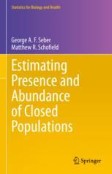Search
Search Results
-
The Almonds and Related Species Identification, Characteristics and Uses
Almond and peach species have global importance as food crops as well as use in landsca** including restoration and reforestation. Because...

-
Species Methods
This chapter is essentially a follow-on from the previous chapter, but with an additional level of complexity. One can simply add an additional...
-
Reactive Oxygen Species Prospects in Plant Metabolism
This edited book focuses on ROS synthesis, potential applications, toxicity, and preservations. It explores the recently proposed hormonal response...

-
Species Delimitation and Exploration of Species Partitions with ASAP and LIMES
DNA barcoding plays an important role in exploring undescribed biodiversity and is increasingly used to delimit lineages at the species level (see...
-
Characteristics of Almond Species
Almonds and their wild relatives are grouped within the genus Prunus. Over 30 almond species and over 20 interspecies hybrids have been reported...
-
Almond Species Classification
Originally classified as Amygdalus communis, cultivated almonds, as well as their close relatives, are currently classified in the genus Prunus...
-
Species Diagnosis and DNA Taxonomy
The use of DNA has helped to improve and speed up species identification and delimitation. However, it also provides new challenges to taxonomists....
-
Almond Species Traditional Utilization
Considerable published information on almond species utilization focuses on their potential as valuable sources for genetic improvement through the...
-
Species Descriptions, Distribution Maps and Images
This chapter covers 33 dicotyledonous families (listed in alphabetic order: Acanthaceae to Menyanthaceae), containing 760 species of aquatic...
-
Species Richness Gradients
This chapter reviews the conceptual and methodological issues related to latitudinal and elevational gradients of species richness at distinct...
-
Species-Rich Arable Land
Before the introduction of mineral fertilizers and the widespread use of synthetic pesticides, arable land of Central Europe was home to a large...
-
Enrichment of Naked Amoebae Species
In spite of various studies on naked amoebae species across the world, the diversity of naked amoebae in various habitats is still poorly studied....
-
Species Identification Through Sequencing
Ciliates with nuclear dualism are reported to be a highly divergent unicellular eukaryotes. They play very vital roles in regulation of microbial...
-
Malus Species: Germplasm Conservation and Utilization
Malus species is important not only from the point of economics but also from a cultural and nutritional point of view. Most of the Malus species are...
-
Seed Germination of Almond Species
Almonds have hard shells (endocarps), and in some species, mechanical and/or chemical scarification, such as immersion in sulfuric acid, is required...
-
Species Assemblages
Although allopatric speciation among areas segregated by dispersal barriers increases the regional species richness, sympatry of closely related...
-
Earthworms, Their Species, and Biological Features
Earthworms, a diverse group within the annelid class Oligochaeta, exhibit a rich tapestry of species and biological features that have fascinated...
-
Identification of Almond Species by Using Markers
Taxonomic classifications utilize morphological, biochemical, and molecular differences. Almond species show a particularly large variation in nut...
-
Candida Species Methods and Protocols
This updated volume explores Candida and candidiasis methods, useful to a wide variety of Candida scientists including those new to the field....
-
Untangling multi-species fisheries data with species distribution models
Long-term trends in fisheries catch are useful to monitor effects of fishing on wild populations. However, fisheries catch data are often aggregated...

